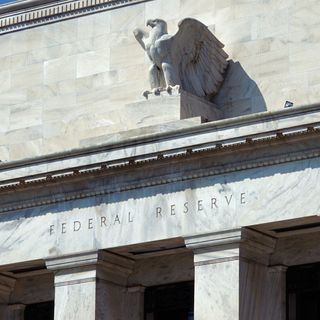When people think of monetary policy, they usually think of the Reserve Bank of Australia changing its official cash rate.
This is the rate at which banks borrow and lend to each other overnight. It's a big influence, but not the only one, on the interest rates banks charge their customers to borrow.
However, when the official cash rate approaches zero, the RBA needs to consider alternative approaches to implementing monetary policy.
One approach is quantitative easing.
With quantitative easing, instead of changing an official interest rate, the RBA buys government bonds or other assets.
This lowers longer-term interest rates, interest margins and the Australian dollar exchange rate.
The cash received by the sellers of government bonds supports the supply of credit and money in the economy.
Lessons from quantitative easing in the United States: A guide for Australian policymakers

An alternative to lowering interest rates
Quantitative easing works in much the same way as a cut in interest rates and there is nothing exceptional or unorthodox about it.
It is simply a different tool for monetary policy to use when the official interest rate is near zero.
While some have argued that monetary policy has become less effective, RBA assistant governor Chris Kent has shown that monetary policy can still work well.
Even if it were thought that monetary policy had become less effective, this would be an argument for using monetary policy more aggressively, not less.
There is no in principle limit to the size of quantitative easing other than domestic inflation.
Even if quantitative easing were thought to have only a small effect, it is always possible to calibrate the size of quantitative easing to get a larger impact.
This means that monetary policy remains effective, even when interest rates are near zero.
Many assume that because interest rates are low by historical standards, monetary policy must already be stimulatory, but the level of the cash rate tells us very little about the effective stance of monetary policy.
How did we get here?
The RBA has kept monetary policy too tight for too long, with inflation falling below the 2-3 per cent target range from the end of 2014.
More seriously, people no longer believe the RBA will meet its inflation target in future.
The RBA sat on its hands between August 2016 and June this year, even as inflation fell, fearing that further cuts in interest rates would fuel growth in household debt and house prices.
Yet the RBA's own research shows this should not have been a concern.
An increase in housing supply eventually saw a decline in house prices and a moderation in mortgage lending, as the RBA always expected.
The RBA also underestimated the flexibility of the labour market. The RBA assumed that inflation would rise on the back of stronger wages growth as the labour market tightened.
But the real relationship between the labour market and inflation runs the other way.
Tight monetary policy and low inflation crippled nominal wages growth and kept the unemployment rate higher than it needed to be.
The RBA now concedes that the unemployment rate could be lowered to 4.5 per cent from the current 5.3 per cent, without triggering inflation.
While Tuesday's interest rate announcement suggested the RBA would now target full employment, the emerging global downturn makes it unlikely the RBA will be able to make significant inroads into the unemployment rate.
The challenge now is to stop the unemployment rate from rising as the world economy turns down.
Has tight monetary policy weakened the economy?
The RBA's tight monetary policy has left the Australian economy with a very weak starting point going into a global downturn.
Quantitative easing is often seen as "aggressive" or "extreme", but extended periods of low interest rates and quantitative easing are usually symptomatic of monetary policy that has not been used nearly aggressively enough.
The good news is that quantitative easing can help get monetary policy and the economy back on track.
My research for the United States Studies Centreon the US experience shows that quantitative easing is effective.
These estimates are likely to be understated, because the US Federal Reserve went out of its way to limit the transmission of quantitative easing to the rest of the economy, fearful it would be too potent and lead to excessive inflation.
Those concerns proved misplaced.
By pulling its punches, the Fed ended up underperforming its mandate and had to pursue quantitative easing for longer than would have been the case if it had used the monetary policy more aggressively at the beginning of the economic downturn in 2008.
The Government should not attempt to use fiscal policy as a substitute for monetary policy.
As former RBA governor Glenn Stevens argued in 2008, fiscal policy has significant limitations when used for demand management.
Instead, the Government should put in place a new agreement with the RBA governor that includes stronger accountability mechanisms to ensure the RBA delivers on its mandate.






